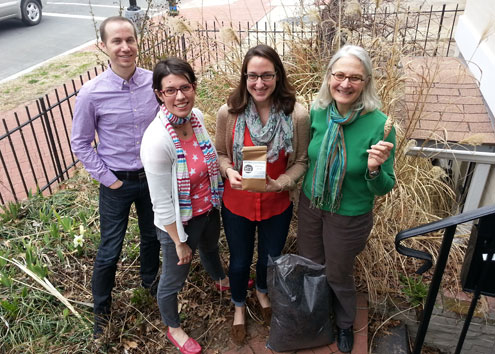Just a few days ago the Intergovernmental Panel on Climate Change, a United Nations group, concluded that the ice caps are melting, sea ice in the Arctic is collapsing, water supplies are coming under stress, heat waves and heavy rains are intensifying, coral reefs are dying and fish and many other creatures are migrating toward the poles or in some cases going extinct. “Nobody on the planet is going to be untouched by the impacts of climate change,” said Rajendra K. Pachauri, chairman of the IPCC. U.S. Secretary of State John Kerry has said "There are those who say we can’t afford to act, but waiting is truly unaffordable. The costs of inaction are catastrophic.”
I need not go into more details, the climate change train has left the station. But there is hope. As conservation professionals we know the effects of climate change. SCB members and those they work with are the “eyes and ears of climate change.” Our actions lie in investigating the effects of climate change and other factors on biodiversity and ecosystems and working to develop adaptation strategies and to educate and engage stakeholders to cope better with climate change. As researchers (in science and the social sciences), managers, policy makers and teachers, we each need to find a way to contribute to adaptation and amelioration of the effects of climate change.
 Doing our part: SCB staff will do more to be green (and support pollinators) by planting an urban garden this summer. Nate Spillman, Shonda Foster, Lauren Krizel, and Geri Unger at the site of the future garden outside the SCB office. Not pictured is Cathy McIntosh. Doing our part: SCB staff will do more to be green (and support pollinators) by planting an urban garden this summer. Nate Spillman, Shonda Foster, Lauren Krizel, and Geri Unger at the site of the future garden outside the SCB office. Not pictured is Cathy McIntosh. |
SCB members are exploring mitigation and adaptation solutions to climate change through their research and work at universities and agencies worldwide. At the 2013 International Congress for Conservation Biology there were two symposia devoted to climate science and policy, and an additional seventeen sessions related to climate change topics including carbon neutrality for organizations, conservation planning for climate change and social resilience in the face of climate change.
The December 2013 issue of Conservation Biology featured a special section on climate change and risk analysis that examined the scientific tools we need to take effective action to respond to consequences of global climate change. This section also considered how to deploy science in a regulatory environment to influence conservation outcomes.
At the four SCB Section meetings this July and August (Asia, Marine, North America and Oceania) many of the workshops, sessions and plenaries will speak to the importance of biodiversity conservation, ecosystem services, climate change and adaptation, and connecting conservation science to management and policy.
It is important for SCB to continue to support and find a voice for our members in their research and applied conservation projects. Although the task is huge, there are many projects that SCB members are involved in that contribute to the growing band of climate adaptation programs contributing to resilience of ecosystems, populations and stability for human communities. I urge you to keep exploring and tell us of your work!
